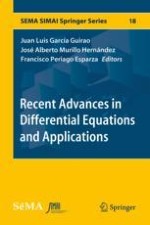2019 | OriginalPaper | Chapter
Linear Elimination in Chemical Reaction Networks
Authors : Meritxell Sáez, Elisenda Feliu, Carsten Wiuf
Published in: Recent Advances in Differential Equations and Applications
Publisher: Springer International Publishing
Activate our intelligent search to find suitable subject content or patents.
Select sections of text to find matching patents with Artificial Intelligence. powered by
Select sections of text to find additional relevant content using AI-assisted search. powered by
